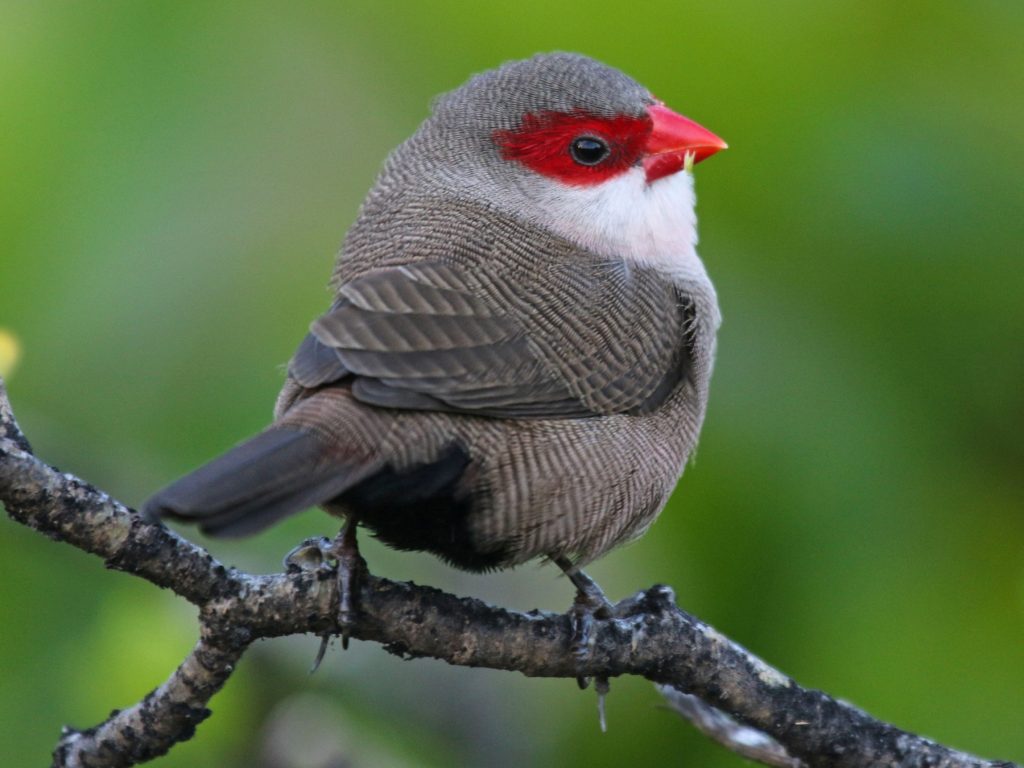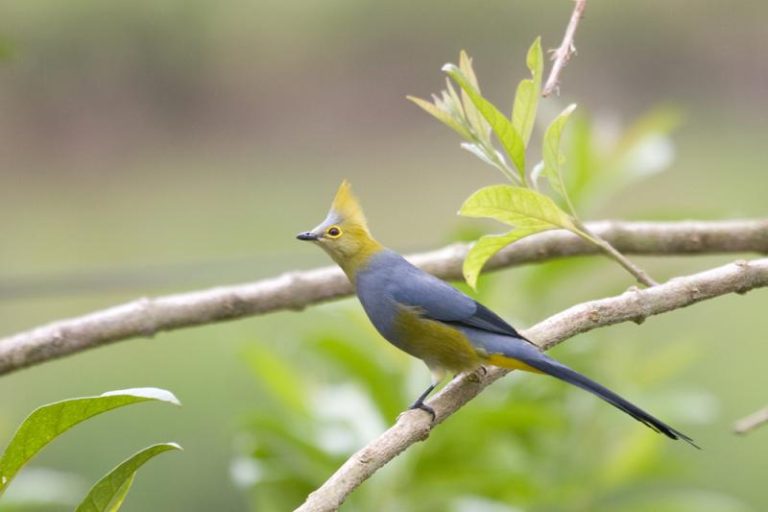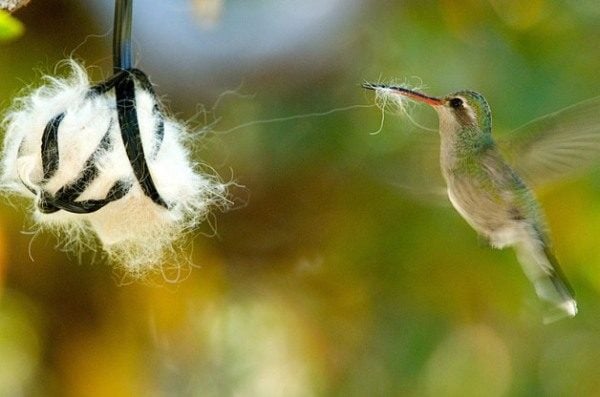The common waxbill (Estrilda astrild) is a bird with mostly gray-brown feathers that are stained with dark brown. Its plumage varies depending on the species, but it usually has white cheeks and a throat, pale pink streaks on the underparts, and a red stripe running through the middle of its eyebrow.
Common Wax-bill:
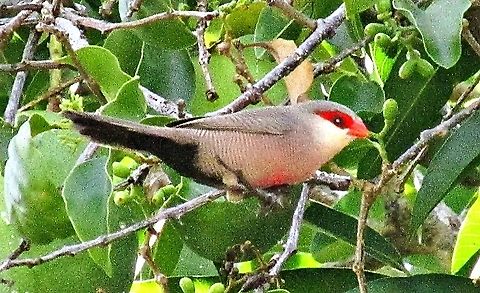
Estrilda astrild:
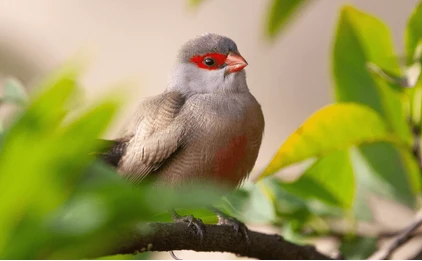
A little passerine bird of the estrildid finch family, the Common Waxbill is also called the St Helena Waxbill. Although it originated in sub-Saharan Africa, it has spread to many other parts of the globe and is currently thought to be present in 10,000,000 km^ worldwide. It is well-liked and simple to care for in captivity.
Appearance:
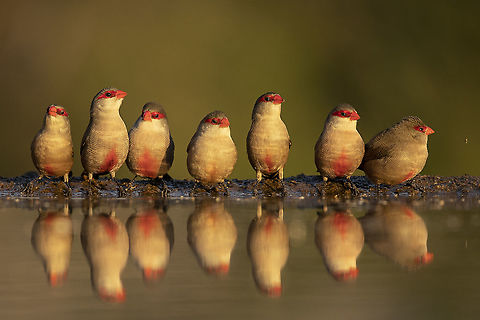
The bird is small, measuring between 11 and 13 centimeters in length, 12 to 14 centimeters in wingspan, and 7 to 10 grams in weight. It features a long, graduated tail, small, rounded wings, and a slender body. The mature bird’s brilliant red bill, which gives it its name, is the same colour as sealing wax.
The majority of the feathers are grey-brown, with subtle flecks of dark brown. The cheeks and throat are pale, and there is a crimson line running through the eye. Depending on the subspecies, there is frequently a reddish stripe running down the middle of the bellу and a rosy flush to the underparts. The tail and vent are dark, while the rump is brown. While they are paler and have less red on their bellies, females resemble males. Young animals have a black bill, fainter dark bars, and little to no red on the abdomen. They are also duller overall.

The Black-rumped, cinnamon-rumped, and black-lored waxbills are examples of similar species. The rump of the Black-rumped Waxbill is black, not brown, and it has a light vent. The dark-coloured Wax-bill has a dark bill, a crimson rump, and hints of red on its tail and wings. The eуe of the Black-lored Wax-bill is streaked with black, not red.
The Common Wax-bill has a unique high-pitched flight-call in addition to a range of twittering and high pitched sounds. The tune is straightforward, nasal, and ends on the final note.
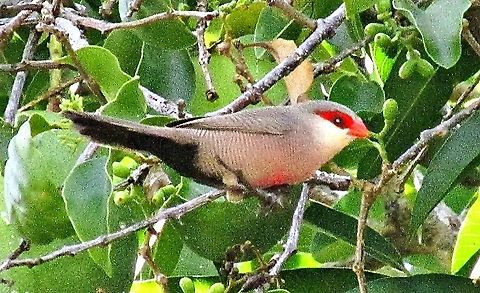
Reproduction:
The nest is made up of a big ball of intertwined grass stems, and on one side is a long tube that points downward. It is constructed inside a hollow that is often surrounded by thick vegetation. The male may construct a crude second nest where he rests. There are four to seven white eggs deposited. After hatching, the young birds fledge 17–21 days after being incubated for 11–13 days. The chicks are fed and the eggs are incubated by both parents. various regions of the world have various breeding season dates. The рiο-tailed Whydah, which lays its eggs in estrildid finches’ nests, has the ability to parasitize nests. They may raise four children in an aviary when kept in captivity.
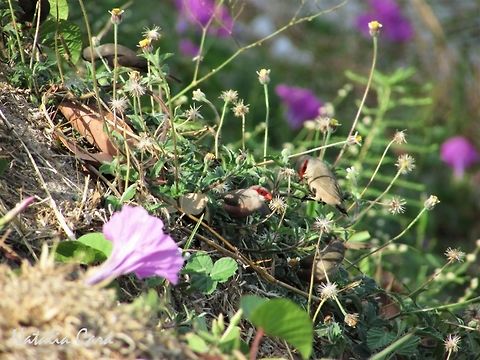
Food:
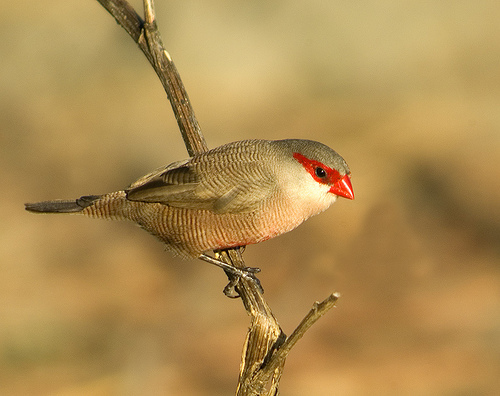
The primary food source is grass seeds, but insects are occasionally consumed as well, particularly during the mating season when higher protein requirements arise. Typically, groups of hundreds or even thousands of waxbills feed together. They typically feed by using their long, spindly claws to cling to the stems and pluck from the flower heads, but they will also scavenge for flax seeds on the ground. The seeds don’t contain much water, therefore they must drink frequently.
